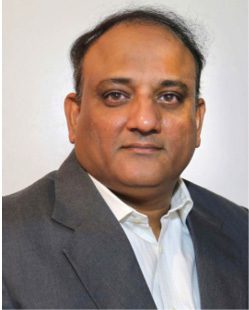Future Forward: Steel Decarbonization Through the ‘Theory of Change’

According to Shiva, the primary purpose of ResponsibleSteel is to enhance steel’s contribution in creating a sustainable society through a “theory of change” that includes standard and certification programs widely accepted by the steel industry.
Currently representing around 15 percent of the global steel industry, ResponsibleSteel has three categories of membership: business members that include supply and demand sides; civil society groups; and associate members that include industry associations, academic institutions, and research and development organizations.
“It’s a member-driven, consultative process, and everything we release is coming from deep discussions with various stakeholders connected with steel decarbonization,” explains Shiva.
Critical to Decarbonization Strategies
There’s no questioning steel’s importance to infrastructure and the need to limit its effects on the planet. Steel generates a turnover of $1 trillion and accounts for approximately 7 to 9 percent of global CO2 emissions.
“Steel is a very critical subject now,” says Shiva. “It’s been part of the mainstay agenda for most organizations involved in decarbonization, so we get invited to collaborate with some of these initiatives in terms of data, accounting rules, setting up threshold rules and every other subject parameter connected to the steel decarbonization roadmap. We are called upon to share our part—share our expertise and collaborate in the process.”
ResponsibleSteel looks broadly at the key types of steel production, including primary steel production that uses iron ore to produce steel as well as secondary production that uses scrap and produces steel through electric arc furnaces. It also examines the energy sources used to make steel as well as where steel is produced and its effects on local communities to provide an industrywide perspective to its analysis and standards that can be applied to all forms of steel productions across the world.
“Our focus is global steel-sector decarbonization,” he adds. “The industrywide nature means the standard and program can be applied to all forms of steel production anywhere in the world rather than just being focused on a particular type of production or a particular region.”
Certification Standard
Shiva notes that the ResponsibleSteel standard isn’t just about climate change and greenhouse gas emissions, a common misperception when discussing steel decarbonization.
“There’s a whole host of other parameters and principles that goes into what makes decarbonized steel,” he adds. “Keeping that in mind, the ResponsibleSteel standard is built around 13 principles, and of those 13 principles, just one—Principle 10—is dedicated toward climate change and greenhouse gas emissions.”
The remaining 12 principles are based on governance, leadership and social principles, including human rights, labor rights and nature principles such as biodiversity. For a site to be recognized by the ResponsibleSteel program, there must be evidence that it complies with all aspects of the standard and not just the climate change and greenhouse gas aspects.
“Most of the larger integrated steel plants are not working in isolation,” says Shiva. “They’re tightly coupled with the community, so the standard is also designed to ensure the steel plant has a positive impact on the community, and the community has a positive impact on the steel plant as well.
“It transcends beyond the site itself and tries to look at how the steel producer can have a positive impact and influence on the community within which it operates,” he adds. “So we measure all of this as part of our audit process before the site is certified or the steel product will be certified in the future.”
A Tool for Engineers and Procurement Teams
According to Shiva, the ResponsibleSteel Standard addresses the steel aspects of embodied carbon and provides a tool for engineers involved in the design of a particular structure to specify the type of steel that can go into the project. There are four progress levels defined in Principle 10 of the ResponsibleSteel Standard, and designers can specify which progress level of steel should be used based on the carbon intensity.
“They could clearly say, for instance, that we would like to use a ResponsibleSteel Level Three steel,” he explains. “They could also specify the product carbon footprint and how it should be reported. In addition to that, they can require the percentage of recycled scrap used in the steel production.”
Shiva believes engineers have a key role in addressing the climate-change problem. “It’s the moment of design when you have the maximum ability to control the carbon footprint, and that design part is largely controlled by the engineering team.”
About Todd Danielson
Todd Danielson has been in trade technology media for more than 20 years, now the editorial director for V1 Media and all of its publications: Informed Infrastructure, Earth Imaging Journal, Sensors & Systems, Asian Surveying & Mapping, and the video news portal GeoSpatial Stream.


